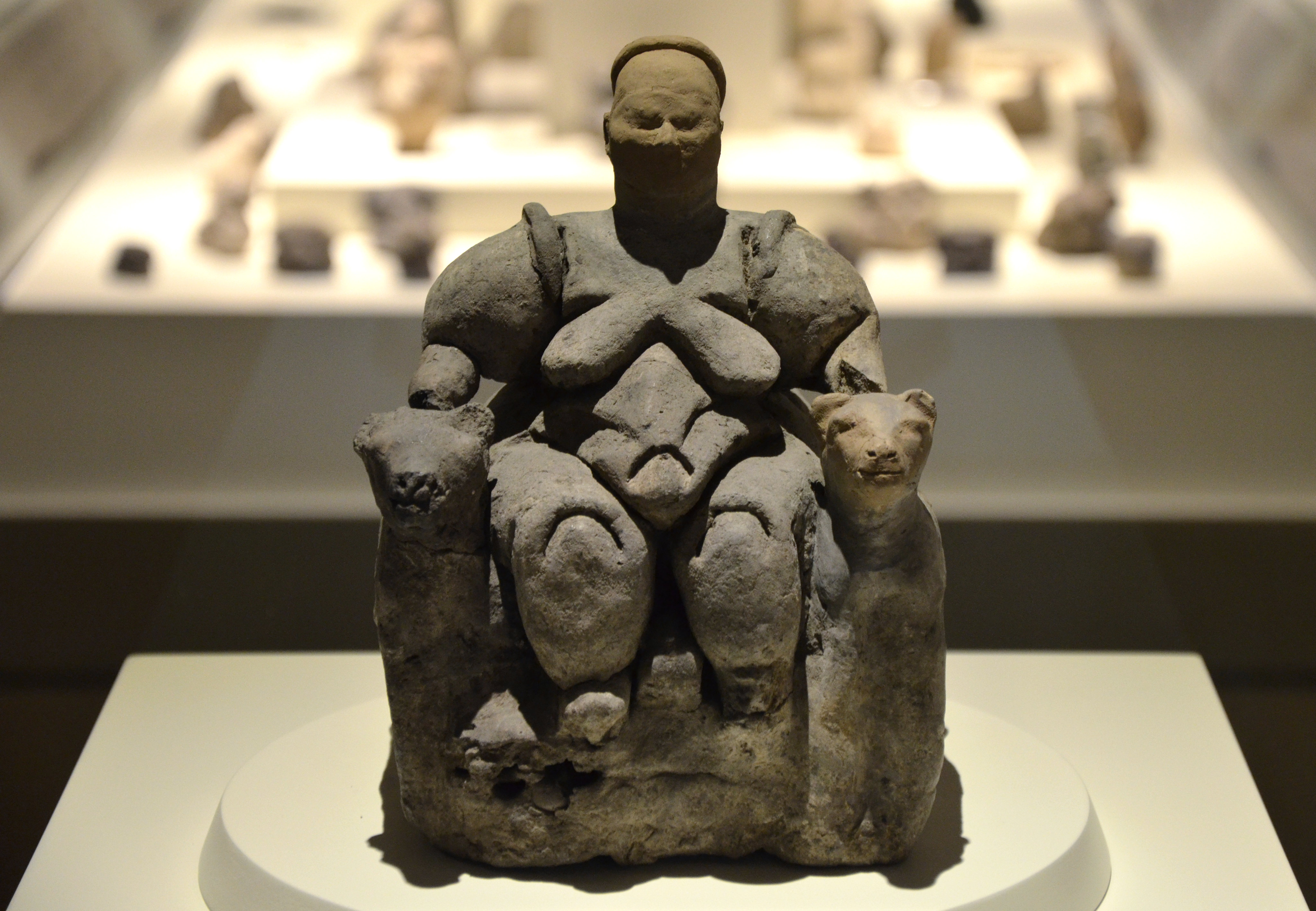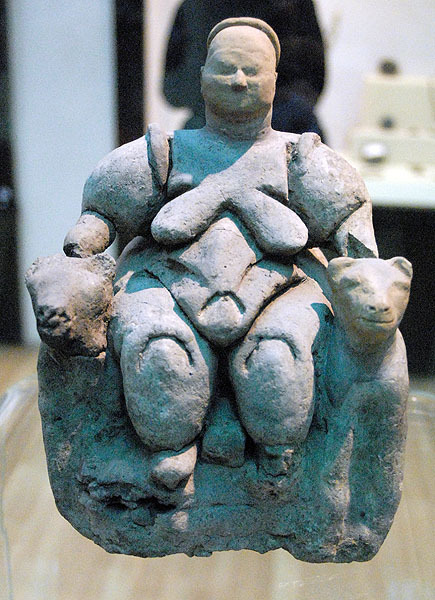The Seated Woman of Çatal Höyük, an 8,000-year-old Neolithic sculpture, stands as one of the most significant representations of prehistoric art and culture. This baked-clay figurine, found in the Çatal Höyük archaeological site in central Turkey, offers a fascinating glimpse into the spiritual beliefs and societal values of one of the earliest human settlements.
The Symbolism of the Seated Woman
The Seated Woman is widely believed to depict a Mother Goddess figure, a motif central to many ancient cultures, symbolizing fertility, life, and nature. The figurine shows a nude woman, often thought to be in the process of giving birth, seated on a throne with two animal head-shaped hand rests—an example of the “Mistress of Animals” motif, which associates the figure with power over nature and animals.

This emphasis on the female form—particularly one that appears maternal and fertile—reflects the role of fertility in Neolithic society. In a community where agriculture and animal husbandry were becoming central, such figurines may have symbolized the fertility of both the land and the people, a critical factor in their survival.
Artistic and Cultural Context
The Seated Woman is one of several similar figurines found at the Çatal Höyük site, indicating that this imagery was not unique but part of a broader cultural practice. Çatal Höyük, a settlement dating to around 7,500 BCE, was a highly sophisticated Neolithic community that provides archaeologists with rich insights into the early development of human society.
Artifacts like this figurine were likely used in ritualistic practices, possibly serving as a protective symbol for the home or as part of fertility rituals to ensure successful harvests and the prosperity of the people. The throne with animal heads adds further complexity to the figure, suggesting a connection to nature and perhaps even a role as a protector of animals and crops.
Comparison to Other Prehistoric Goddesses
The Seated Woman of Çatal Höyük bears similarities to other prehistoric goddess figures, most notably the Venus of Willendorf, which also emphasizes the rounded, corpulent form of a female body. Both figures highlight abundance and fertility, but the Seated Woman is unique in its throne setting and the “Mistress of Animals” motif, suggesting a more developed role for the goddess beyond just fertility, possibly as a ruler or protector of the natural world.

The Head Restoration and Current Display
One notable aspect of the Seated Woman is that the head is a modern restoration, as the original had degraded over time. Despite this, the figurine retains its powerful symbolism and continues to captivate archaeologists and visitors alike. Today, the sculpture is housed in the Museum of Anatolian Civilizations in Ankara, Turkey, where it remains a central piece in the collection of Neolithic artifacts.
Legacy of the Seated Woman
The Seated Woman of Çatal Höyük is more than just an artifact; it is a window into the spiritual life of a society that existed thousands of years ago. Through this sculpture, we gain insight into how early humans viewed the world, the importance of fertility and nature, and the role of women in their cosmology. As one of the earliest and most intricate depictions of a Mother Goddess, the Seated Woman stands as a testament to the creativity and symbolic depth of Neolithic art.

Conclusion
The Seated Woman of Çatal Höyük remains one of the most iconic pieces of Neolithic art, embodying the spiritual and cultural significance of fertility and the natural world in ancient human societies. This remarkable sculpture, with its intricate symbolism and connections to nature, continues to inspire and intrigue, providing modern audiences with a lasting connection to our shared prehistoric heritage.

